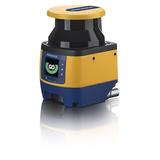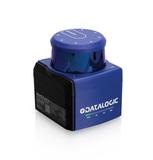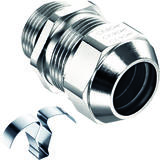
Design Considerations for AGV's
What is an AGV?
AGV is short for Automated Guided Vehicle. AGVs are automated and computer controlled transportation robots that can be used for a range of tasks. Common types of AGVs include Automated Guided Forklifts and Automated Guided picking robots.
You typically see AGV’s in manufacturing and warehousing but can also be used for inspection, transportation, military and exploration applications.
What are the benefits of AGV's?
AGVs can be designed to conduct a wide range of functions. These include remote handling, packing & picking, scanning, measuring & monitoring, signalling & detecting, machine vision & transportation, to name just a few.
As well as being able to conduct multiple tasks, AGVs are equipped with the best safety technology meaning there is little to no chance of collisions or unsafe conditions.
You typically see AGV's in a warehouse used for logistics, optimising productivity and reducing labour costs at the same time.
Design Considerations
Now that we have established what an AGV is and the benefits of using AGVs, we will go through some of the important design considerations.
The industrial automation specialists at OEM Automatic can advise on and supply a wide range of elements suitable for AGVs.
Let’s look into some of the components and some of the highly recommended brands that go together.
Vision
Cameras:
For your AGV to see, you must give it eyes. Cameras can be used to capture objects and scenes in 3 dimensions and are highly useful in logistics and AGV’s. This means that you can get 2D and 3D images in high resolution within a small compact system. They can be used to generate depth data and measure distance.
Key Facts:
- Captures large objects and entire scenes e.g. loaded pallets in warehouses can be measured by depth data
- Designed to fit in warehouse conditions and attached to AGV’s
- Light source pre integrated into the camera housing, meaning result is compact without moving components
- The camera works in daytime light conditions and indoor, even in strong sunlight
- Can include Precision Time Protocol to synchronise multiple cameras in a network
A typical use would be a warehouse where several AGV’s with cameras are moving in a confined space.
We recommend Baslers’ TOF Camera (Image 1), which is packed with advanced and useful technology.
Barcode Readers:
Traceability improvements lead to performance improvement, transforming all capabilities in logistics and increasing productivity. You would typically see 1D and 2D barcode scanners in a warehouse and on an AGV. These help to track information and data, helping you keep track of what is happening.
Traceability is the biggest advantage of using a barcode scanner on an AGV, achieving higher productivity. Some are faster than ever and have great visual quality. Not forgetting they can be extremely configurable.
Key facts:
- Fixed position, replacing the need for operators to scan items manually using a handheld barcode scanner
- It can transform traceability capabilities in all logistics and intralogistics applications
- Many configurations
- Some can be customised with range of lenses, lighting, filters and more
- Flexible reading
- Designed to read fast moving barcodes
- Some designed to read most challenging printed labels and marked parts
Take a look at our Datalogic Matrix 320 barcode reader (Image 2).
Sensing and Detecting:
Being able to sense and detect is one of the most practical, time saving and efficient purposes of an AGV, which eliminates the use of labour. Components that sense and detect can be used for platform load, weight detection, movement, presence and position detection in the warehouse. These features are also used for the critical safety of the AGV and minimise any potential risk.
Safety Laser Scanner – A Safety Device
Safety laser scanners can be mounted onto AGV’S, and warning zones can be programmed to automatically change the vehicle's position, speed, and direction. Additionally, there are versions with encoder inputs to allow safe measuring of the speed of the vehicle. The purpose is to ensure staff safety whilst improving efficiency and Is what makes the AGV so special and innovative.
Key Facts:
- Can program the scanner to mute areas of varying size and position, achieved by muting sensors that would be activated by the machine or load that will be entering or exiting the unsafe area
- Easy to set up, the unit's configuration is via the bundled software, which will quickly guide you through the set up process
See more about our Datalogic Safety Laser Scanner, which is an innovation in workplace safety (Image 3).
Lidar Guidance Scanner
LIDAR (Light Detection and Ranging) uses laser-based time-of-flight (ToF) technology to construct a 360-degree view for the guidance of AGV’S. These are used purely for guidance and navigation of AGV’s and can also measure distance, making them super important in terms of manoeuvring the robot in the right direction.
Key facts:
- 360 degree and 50- meter visibility
- Broad temperature ranges
- Some protection against dust and water – great for indoor industrial environments
- Used in material handling and manufacturing
- Speeds up efficiency and measuring too
Datalogic provides Lidar guidance scanners that use infrared laser technology and achieves navigation of AGV’s moving up to 2 m/s and a scan rate of up to 25 Hz and 60,000 measurements per second (Image 4).
Using this and the safety laser scanner together offers a complete solution to safety and sensing!
Control Panel Components:
Electrical components can be found on the inside and outside of an AGV. Many different features aid control and make the electronics work, so we are touching on a few.
Emergency Stop Solution
Safety is a priority! Emergency stops must be a part of any AGV, and you must have a completely reliable stop device. Safety is of utmost importance, and this is a simple but essential device that can be pulled/turned or key-controlled depending on the product.
An Emergency stop solution consists of a mushroom head designed to ‘push’ with the action of a sufficient force to open the contact and triggers an irreversible locking of the opening. Then, an emergency stop signal gets cancelled only by deliberate manual resetting of the mushroom head.
Key Facts:
- Insulating material ensuring electrical safety
- Easy to clean and maintain
- Options for illuminated emergency stop mushroom head: pull, turn or unlocking key
- Mushroom head has a yellow ring visible in the deactivated position giving a clear visual indication when activated.
Our BACO emergency stop solutions can be found here and meet EIC standards for emergency stop actuators. You can choose from 3 types of emergency stops and 3 types of mush-room heads. (image 5)
Signalling Beacon
A beacon should be visible on an AGV to show signals. A regular beacon would be suitable for this and is designed for maximum signalling effect, and it is also very easy to mount. There is also an option for a beacon and sounder combo for maximum effectiveness.
Key Facts:
- Comes in LED Steady, flashing, strobe, xenon and multifunctional
- Wide range of colours
- Audible base option, or audible/visual alarm which is suited for large indoor and outdoor areas
- All types of mounting
- Up to IP69 rated
- M22 beacon sounder combo for smaller applications
Check out AUER’s beacon range, which has two light module designs. The R Series is a powerful, flexible and robust system. (Image 6)
Cable Glands
Cable glands suitable for use on AGV’s provide EMC shielding that achieves an effective contact to the cable screen.
Key Facts:
- Protective clamping of cable shields means excellent shield contact and the smallest possible transfer impedance
- Quick and easy contact of partially stripped shield cables and exposed cable shields
- Restriction free cable installation
Agro’s EMC Cable glands guarantee complete control during installation, compensating for tolerances in shielding thicknesses to make a secure and reliable connection to the cable screen. (Image 7)
Motors
An AGV to move and perform physical activities will require motors and other related components such as linear actuators. We will look at a few particular products that relate to AGV’s big and small.
Motors and Gear Motors
A simple DC powered gear motor may be used for applications such as internal flaps, doors, or movable dividers that present a low power requirement, up to fully networked high power brushless traction drive motors. Depending on the type of AGV you have, it is best to work with us to find the right components that you need. (image 8)
Key Facts:
- ‘Simple’ brushed DC for basic movements.
- Brushless DC for high power in a small package, with control and feedback
- Networked motors with built-in drives for high levels of control.
- Local or remote drive options available
- IP ratings to suit the application
OEM Automatic can provide a wide range of motors and gear-motors suitable for AGV applications from a variety of manufactures including Crouzet, Minimotor and Doga.
Linear Actuators
Linear actuators can be used for many operations on and within AGVs. We can provide 35mm long miniature linear actuators to operate an internal door or camera lens cover, up to a large capacity unit for lifting components or replacing hydraulic lifts – all depending on the type of AGV you have.
Key Facts:
- More popular than pneumatic and hydraulic systems due to power and precision
- Used for lifting, pushing or positioning
- Modular structure so can interchange with existing cylinders
- Various control options for performance flexibility, safety and cost-effectiveness.
- Lubrication for high or low ambient temperatures
We suggest looking into Actuonix for linear actuators.
Solenoids and Electromagnets
Solenoids and electromagnets are used to lock compartments and security bolts. You’d use these for interlocks, holding doors/panels/dividers and cage locks.
Key facts:
- Options for high cycle counts and or long power-on time
- Solenoids for push and or pull work
- Power-on to hold or release electromagnets
- Quality product for increased efficiency and minimal failures.
- Full bespoke design options available for large quantities (typically 10k+)
We recommend NAFSAs range of extensive electromagnets. With their specialist knowledge in the electromagnet field, they lead the way in this industry. (Image 10)
A mere insight into a few of the components that make an AGV what it is today. Logistics, manufacturing and distribution are becoming unimaginable without Automated Guided Vehicles. Say bye to inefficiency, human error and time-consuming processes!
Email [email protected] if you would like more information about AGVs and the components required.
OEM can help you with all industrial automation application enquiries.
BlogRelated Products
Vision
Sensing and Detecting

Safety Laser Scanner

Guidance Scanner
Control Panel Components

Emergency Stop Stations

Beacons

Beacons with Sounders

